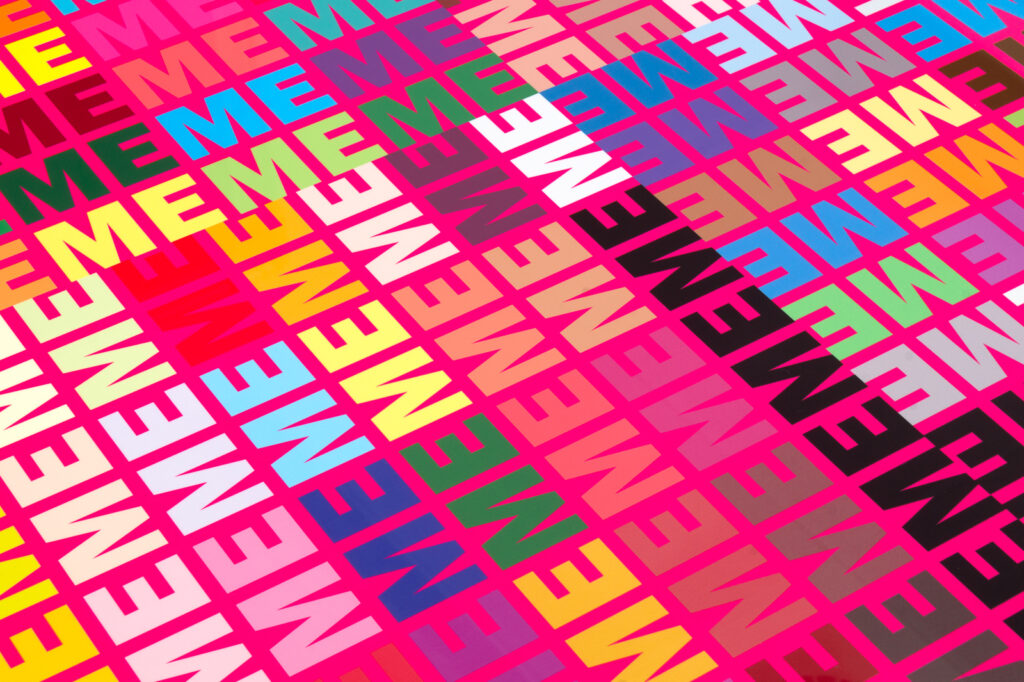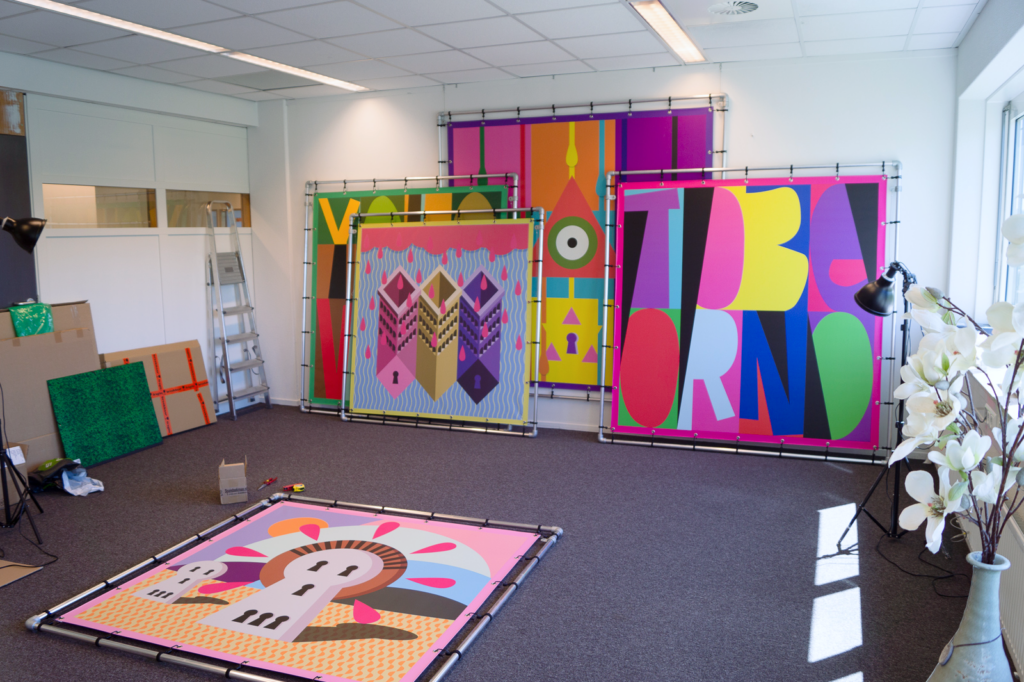Welcome to my portfolio. I have split my work into 3 groups: Prints, Queue and Code. Pick a button above to start.
Printing techniques
I work in fine art prints, sublimation prints and large inkjet prints. The designs are created in vector applications like Affinity Designer. Some images are written in code using a lightweight Scalable Vector Graphics editor.
Once a design is complete, all elements are fine-tuned and colour proofed to match the characteristics of a particular printer. The solid color designs require high quality machines and materials. The images are printed on fine art and dye-sublimation machines. For large projects where size is more important than resolution, large commercial printers are used.
Fine art prints
Fine art inkjet printers are ideal for transferring the rich colors and solid color surfaces of my designs to high quality paper. Where the design exists in digital space, the materials of my art are pigmented dyes and inks, applied to paper, metal, acrylic, vinyl and fabric. The crisp lines and vibrant colors are printed using excellent quality pigmented inks, premium paper and high-resolution printers. These works of art will last for decades.

Giclée prints
Giclée usually refers to a reproduction process that includes high-resolution cameras or scanners to digitise analogue works of art. The resulting digital files are reproduced using high-resolution printing. The materials and machines are of the same quality as fine art printing, if not better. These items are expected to last decades, depending on the materials used, and how the work is stored.
Limited editions
Giclées are often published in limited editions, a concept derived from analogue printmaking. Designs are traditionally applied to woodblocks, lithographic stone, linoleum or copper plates. These surfaces are prone to wear and tear and can fade or develop artefacts during the printing process. In the digital age however, reproduction is virtually lossless. The use of certificates make limited editions a possibility. They introcude a documented scarcety, much like NFT’s on a blockchain. The artist and printmaker (or publisher) agree on a finite number of copies, which are numbered and accompanied by a certificate.
Dye sublimation prints
Dye sublimation printers use heat and pressure to fuse dyes onto materials such as coated metals, ceramics and fabrics. This technique has unique challenges like material expansion that occurs during the heated printing process. Gasification of pigmented dyes, which chemically bond with the underlying materials, result in stunning solid color surfaces and an image that is crisp and sharp. The print is sealed with a glossy or matte varnish which makes the artwork extremely durable. When printing on aluminium, it can be left frameless and is usually fitted with a mounting system.

Large inktjet prints
The large prints are produced on wide format inkjet printers suited for large outdoor advertising and billboards. These printers excel at fast, large scale imaging and use industry standard inks and surfaces. The qualities of these techniques make them well perfect for projects such as larger exhibits and installations. These prints can be used outside, and have a limited lifespan, depending on how they are used or stored.

